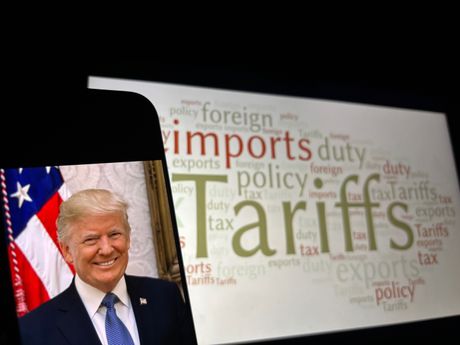Trump's tariffs come into force! Serbia hit with as much as 37 percent, and here's what's next

Today, the high tariffs announced by US President Donald Trump at the beginning of April, which affect about 60 countries around the world, including Serbia, came into force.
Although it was expected that China would bear the brunt of the measures, Serbia is among the countries affected by some of the highest import taxes - as much as 37 percent.
Washington calls the measures "reciprocal" and they represent a serious blow to domestic exporters, particularly from the auto parts, tires, plastics, chemicals and metals sectors. Although the United States is not among Serbia's top trading partners - it is in 19th place - experts warn that the consequences could be much broader.
"We may not have a large volume of trade with the US, but we are part of a wider European production chain, especially when it comes to semi-finished products for the automotive industry," professor at the Faculty of Economics in Belgrade Ljubodrag Savic explains for Telegraf Biznis.
"Most of our goods go to Germany, which then exports final products to the US. If the German economy suffers due to the tariffs, we will also feel it," he adds.
We are losing our competitive edge
For Serbian companies that export directly to the US, such as manufacturers of auto parts and rubber products, the 37 percent increase in tariffs means a loss of competitive advantage over countries that are hit by lower tariffs - or that are not affected at all.
Precisely for this reason, the most important exporters gathered at a meeting with representatives of the Serbian Chamber of Commerce, in order to find possible ways to mitigate the consequences of this decision.
Political background of import taxes
Professor Savic warns that the economic dimension of these tariffs is not the only one:
"Serbia is the only European country that has not imposed sanctions against Russia, and it is not ruled out that this decision is part of wider political pressure. The fact that we have customs taxes three and a half times higher than, for example, Albania and Montenegro, speaks for itself," he says.
The Trump administration is known for using economic measures as a tool to achieve political goals, Savic noted. In this context, record customs taxes for Serbia also represent a clear message - balancing between the East and the West is becoming increasingly difficult.
Trade in numbers
The total exchange of goods between Serbia and the US in 2024 amounted to 1.3 billion euros, while the exchange of services reached as much as 2.2 billion euros. In the first two months of 2025 alone, the exchange of goods amounted to 242 million euros.
Countries that have faced lower tariffs of 10 percent include Singapore, Brazil, Australia, New Zealand, Turkey, the UAE and others. By comparison, China has been hit the hardest – with the overall rate of tariffs now reaching as high as 104 percent.
Serbia's unenviable position
In light of these decisions, it is clear that Serbian exporters will have to find new markets or count on state support in order to overcome this period. Although the trade exchange with the US is modest, indirect effects, through European partners, could be long-term and serious.
In any case, one thing is certain - the high tariffs initiated by Donald Trump have already disrupted international flows of goods, and Serbia is in a disadvantageous position far more, it appears, for political than economic reasons.
(Telegraf Biznis)
Video: Punom parom gradi se Moravski koridor, naplatna stanica u Adranima imaće sedam traka
Telegraf.rs zadržava sva prava nad sadržajem. Za preuzimanje sadržaja pogledajte uputstva na stranici Uslovi korišćenja.

